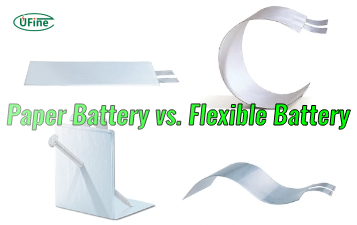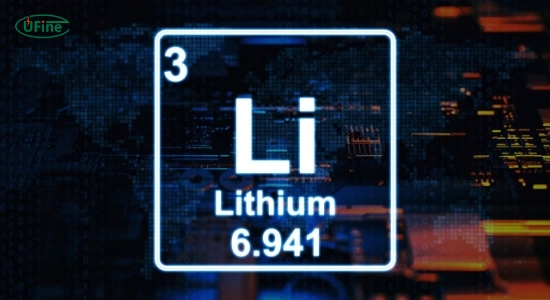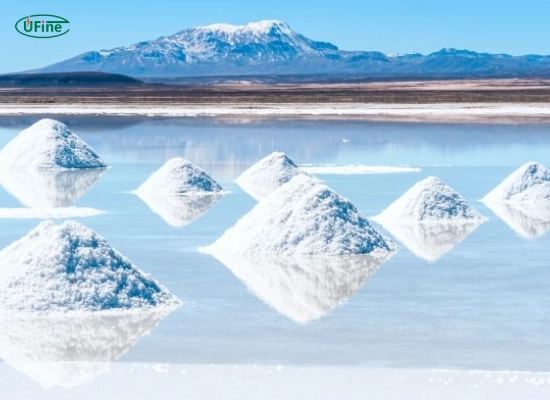Where do lithium batteries come from? This article explores these batteries’ origins and manufacturing intricacies, which becomes essential to appreciate their pivotal role and enforce eco-friendly practices in their production. Acquiring the journey from inception to creation becomes instrumental in comprehending their significance and advocating for sustainable methodologies in their manufacture.
Part 1. What is lithium?
Lithium, a chemical element (Li) denoted by its atomic number 3 on the periodic table, is a soft, silver-white metal. It holds the distinction as one of the lightest metals. It possesses unique properties crucial for various industries, especially in energy storage. Its low density and high electrochemical potential make it an ideal material for lithium-ion batteries, enabling efficient energy storage and discharge.
Part 2. Where does lithium come from?
Lithium Extraction
Lithium comes from two main places: water (brine) and rocks. Brine is water with lithium pumped from underground or salt flats. They make lithium compounds by drying the water. Rock mining crushes minerals like spodumene and petalite, then uses heat and chemicals to get lithium.
Other Materials
Cobalt
- Origins: Cobalt comes from places like the Democratic Republic of Congo (DRC), where there is lots of cobalt.
- Extraction: Mining processes in the DRC, including industrial and artisanal mining, contribute to the global supply chain of cobalt used in battery production.
Nickel
- Origins: Nickel is a crucial component in various parts of lithium-ion batteries, particularly in cathodes.
- Global Mining: Nickel mining occurs worldwide in Indonesia, the Philippines, Canada, and Russia.This nickel is essential for making batteries.
Manganese
- Origins: Specific cathodes in lithium-ion batteries use manganese as another essential material.
- Mining Sources: Mining operations in South Africa, Australia, China, and Brazil provide manganese, a vital component for battery production.
Graphite
- Origins: Graphite, used predominantly in anodes, plays a critical role in the battery’s functioning.
- Global Extraction: Various countries, including China, Brazil, Canada, and Madagascar, source graphite that is essential for battery manufacturing.
Part 3. Battery manufacturing process
Battery Components
To make batteries, we need vital parts. Cathodes like lithium cobalt oxide (LCO), lithium iron phosphate (LFP), or lithium nickel manganese cobalt oxide (NMC) are the positive parts. Anodes, made from graphite or other carbon stuff, are the negative part. Separators, often made of plastic, keep things separate. Electrolytes, like dissolved lithium salts, help ions move when charging and using the battery.
Cell Assembly Process
Cell assembly, a crucial stage in lithium-ion battery manufacturing, comprises several meticulous steps ensuring precision and quality:
- Component Arrangement: Meticulously arranging the battery components, including the cathode, anode, separator, and electrolyte, to precise specifications within the designated cell.
- Encapsulation: Carefully sealing the arranged components within a casing, creating a closed environment for the cell’s functioning and preventing external contamination.
- Precision Handling: The process demands a controlled environment to avoid impurities or foreign particles affecting the cell’s performance or safety.
- Automated Assembly: Employing automated assembly lines to execute these tasks precisely and consistently, minimizing human error and ensuring uniformity across cells.
- Quality Control Measures: Implementing stringent quality control checks at every stage to verify proper arrangement, sealing, and absence of defects or irregularities.
- Testing and Validation: Conducting thorough testing procedures to validate the assembled cells’ performance, ensuring they meet specified standards and performance criteria.
- Packaging and Storage: Once validated, appropriately package and store the assembled cells in a controlled environment to maintain their integrity before integrating them into battery packs.
Battery Pack Assembly
Manufacturers combine individual cells to form battery packs, configuring them based on voltage and capacity for diverse device applications. The assembly involves connecting cells in series or parallel configurations and integrating protective casings. Incorporating battery management systems optimizes performance and safety by monitoring and balancing cells.
Part 4. Lithium battery environmental impact
Lithium-ion batteries, while pivotal in powering our devices, pose specific environmental challenges:
- Resource Depletion: Mining operations for lithium and other essential materials can lead to environmental degradation, habitat disruption, and resource depletion in regions with substantial reserves, impacting ecosystems and local communities.
- Carbon Footprint: The manufacturing process of lithium-ion batteries, involving extraction, refining, and assembly, contributes to greenhouse gas emissions and energy consumption, impacting air and water quality.
- Chemical Contamination: Improper disposal or mishandling of lithium batteries can lead to chemical leakage, potentially contaminating soil and water sources with hazardous materials posing risks to flora, fauna, and human health.
- Waste Management: Used batteries are tricky to throw away or recycle because they’re complicated. We need unique places and ways to recycle them, or we might create more electronic waste.
Part 5. Lithium battery recycling
Material Recovery: Recycling lithium-ion batteries involves extracting valuable materials like lithium, cobalt, nickel, and other metals through specialized recycling processes. This reduces the demand for new raw materials, curbing mining activities and conserving resources.
Reduction of Waste: Proper recycling diminishes the environmental impact of lithium batteries by reducing electronic waste accumulation, preventing harmful materials from leaching into the environment, and promoting responsible waste management.
Resource Conservation: Recovering materials from used batteries for reuse in new batteries or other industries helps conserve natural resources, lessening the strain on mining operations and promoting a circular economy model.
Challenges and Innovations: Recycling batteries is hard because they’re complicated. But scientists are working to make it better and cheaper and get more valuable stuff from old batteries.
Part 6. FAQs
-
How destructive is lithium mining for the environment?
Lithium mining can have environmental impacts, including water usage, habitat disruption, and soil contamination. However, compared to other mining practices, lithium mining’s environmental impact can vary depending on mining methods and environmental regulations. -
Are lithium batteries bad for the environment?
Lithium batteries are more environmentally friendly than traditional disposable ones; however, their production involves mining, processing, and transportation, contributing to environmental impacts. To mitigate potential harm, proper disposal and recycling are essential. -
Is battery manufacturing terrible for the environment?
While battery manufacturing can have environmental impacts, including resource extraction, energy consumption, and waste generation, technological advancements, and recycling processes aim to reduce these impacts by improving efficiency and recycling rates. -
Can lithium batteries be recycled?
Yes, lithium batteries can be recycled. Recycling processes recover valuable materials like lithium, cobalt, and nickel, reducing the need for raw materials and minimizing environmental impacts associated with mining and disposal. Efforts to improve recycling infrastructure are continually expanding to manage the growing volume of lithium batteries.
Related Tags:
More Articles

Paper Battery vs. Flexible Battery: What’s the Difference and Which Is Better?
Paper vs. flexible batteries: learn the key differences, benefits, and which power source fits best for wearables, sensors, and smart tech.
What to Know Before Buying a Tiny LiPo Battery for Your Project
Tiny LiPo batteries are powerful and compact. Learn how to choose the right one for your project with specs, safety, and charging tips.
Bloated LiPo Battery: Will It Explode?
Will a bloated LiPo battery explode? Discover the causes, risks, safety steps, and expert tips to avoid disaster and protect your gear. Must-read safety guide!
12V 100Ah Lithium Ion Battery Price: Full Guide
Learn about 12V 100Ah lithium-ion battery price, from cost ranges to best brands, hidden fees, and how to get the best deal. A must-read for smart buyers!
Resistance and Conductivity: What It Means for Your Lithium Batteries
Resistance and conductivity impact lithium battery performance, lifespan, and safety—learn how they work and why they matter.





